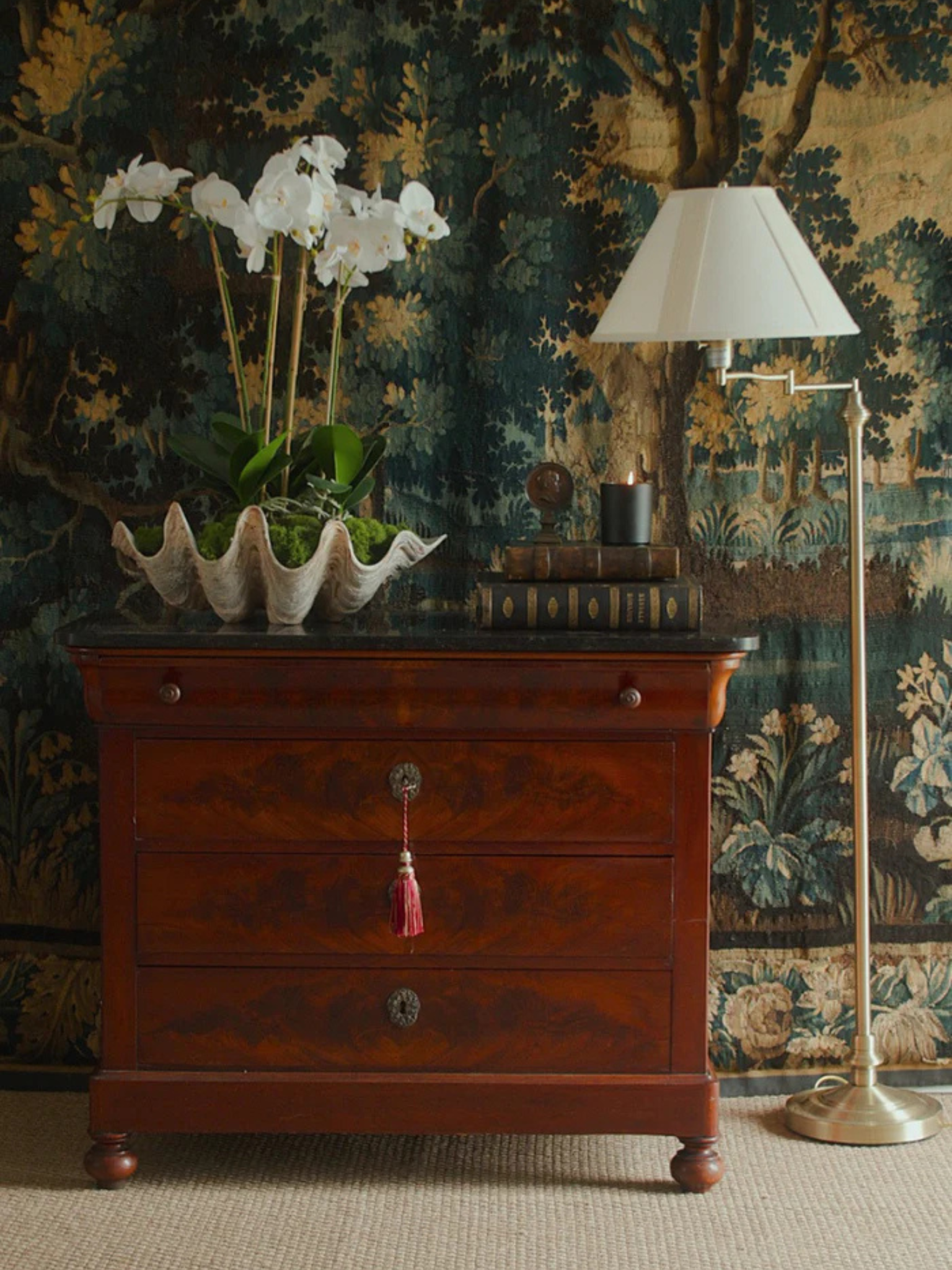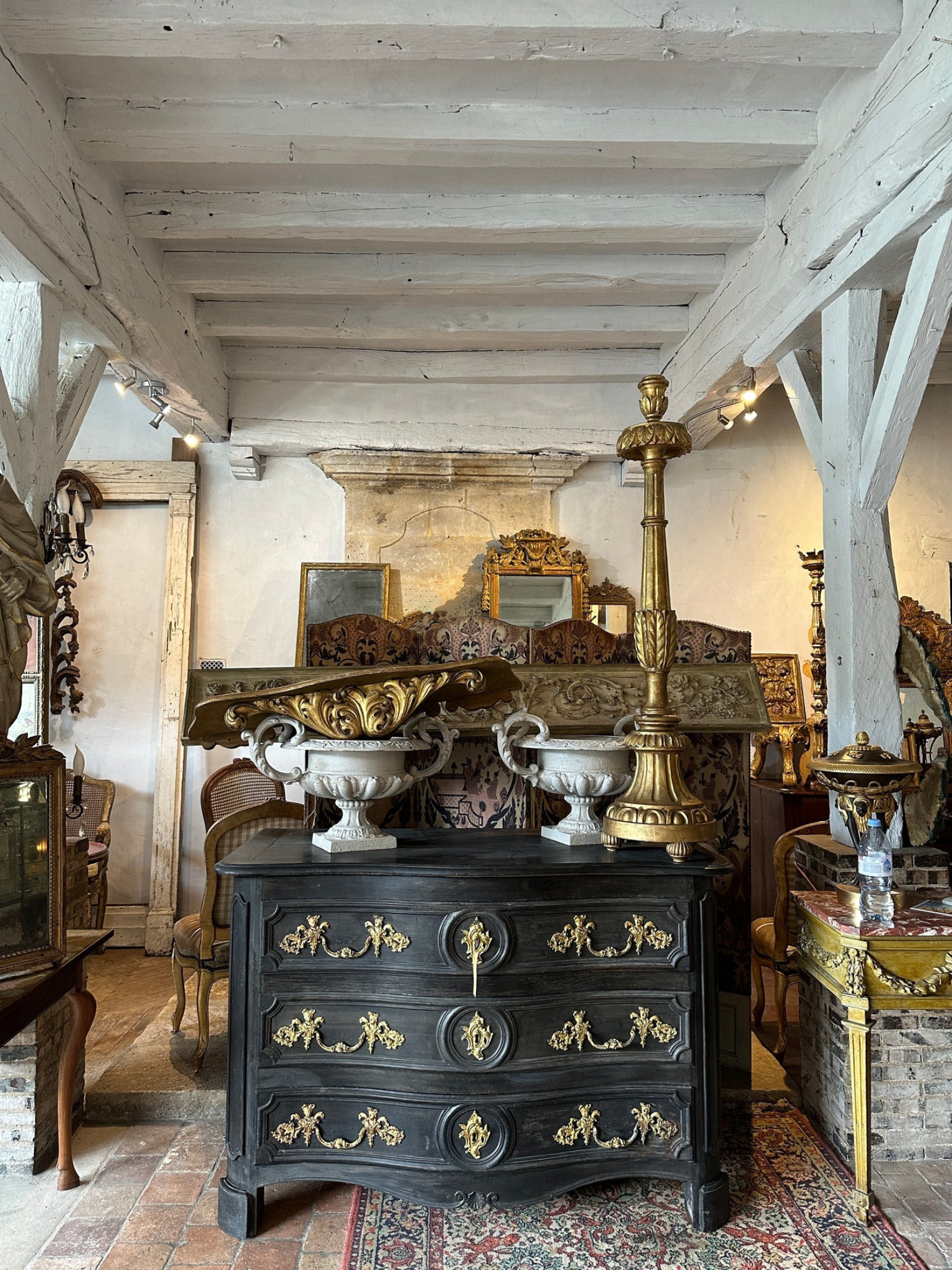
Woven Wilderness: Verdure Tapestries of the 17th and 18th Century and Their Enduring Legacy
Verdant forests, meandering streams, and lush foliage—verdure tapestries capture the poetic stillness of nature in thread. These tapestries, thriving in the 17th and 18th centuries, are more than exquisite decorations; they’re cultural heirlooms woven with history, craftsmanship, and symbolic meaning. Today, as we reflect on our heritage and move toward more sustainable, meaningful interiors, verdure tapestries offer not only inspiration but vital lessons in artistry and preservation.
What Are Verdure Tapestries?
The word verdure comes from the Old French verdure—“greenery”—aptly describing these tapestries’ dominant themes: luxuriant forests, leafy canopies, and often tranquil wildlife like birds, deer, or unicorns. Rather than telling mythological or religious stories, these works of art focused on the harmony of the natural world, often idealized and eternal.
Verdure tapestries were incredibly popular during the 17th and 18th centuries among the European elite, who used them to decorate and insulate their grand homes and palaces. Unlike framed paintings, these massive textiles turned entire walls into immersive scenes, surrounding their owners in imagined garden paradises.
Curated and Styled By : Soul Fed Home (Sydney Hale)
View more on the History of 17th & 18th Century Tapestries by Sydney here.
How Were They Made? The Art and Labor of Verdure Tapestries
Creating a verdure tapestry in the 1600s or 1700s was a monumental task, often requiring months or years of collaborative labor. These were not just woven decorations—they were masterpieces born of guild tradition, masterful design, and painstaking handwork.
1. The Design (Cartoons)
The process began with a full-scale preparatory drawing called a cartoon. These were painted by skilled artists and laid behind the loom as a visual guide for weavers. Artists from leading schools—such as those trained in the Flemish or French academies—would often be commissioned specifically for this task.
Cartoons featured layered landscapes, careful attention to perspective, and detailed botanical forms—many inspired by real flora or Renaissance botanical prints.
2. Materials: Wool, Silk, and Sometimes Gold
-
Wool was the foundational thread for most verdure tapestries. It was chosen for its durability, ability to take dyes well, and warm texture. The best wool came from English and Spanish sheep and was often spun very finely.
-
Silk was used for highlights—glinting water, birds’ feathers, or sunlit leaves. Its sheen added a subtle play of light that animated the forest scenes.
-
In the most luxurious tapestries, threads of gold or silver-wrapped silk were also used, though these were more common in royal commissions.

3. Natural Dyes: A Color Palette from the Earth
All the threads were hand-dyed using natural sources:
-
Woad and indigo for blues
-
Weld and dyer’s broom for yellows
-
Madder root for reds
-
Walnut hulls and oak galls for rich browns and blacks
-
Overdyeing (e.g., blue over yellow for green) was common, giving rise to the lush greens that dominate verdure scenes.

Dyeing was a skilled trade of its own. Master dyers worked closely with weavers to ensure consistency and brilliance in the final piece. Often, dyeworks were kept secret within guilds and passed down through generations.
4. Weaving on a Loom
Verdure tapestries were woven on large low-warp (basse-lisse) looms—horizontal structures where the warp threads lay flat. Weavers worked from the back, using the cartoon beneath the warp threads as a guide.
They used bobbin weaving techniques to interlace colored threads (weft) through fixed vertical threads (warp). Each color change required a new bobbin, sometimes leading to dozens of bobbins in use at once.
Every square inch of tapestry was built by hand, often by teams of artisans working in concert for many months. Workshops like those in Brussels, Beauvais, Aubusson, and Oudenaarde became synonymous with exceptional tapestry quality.
Who Were the Great Makers?
Flemish Workshops (Brussels, Oudenaarde, Tournai)
These cities were the undisputed powerhouses of tapestry production in the 16th and 17th centuries. Flemish weavers perfected naturalistic foliage and subtle perspective—key elements in verdure work. Brussels tapestries often bore a small woven mark: a red shield with a yellow “B.”
French Workshops (Aubusson & Beauvais)
In the 17th and 18th centuries, French makers brought their own flair, influenced by the Rococo style. Aubusson verdure tapestries might include romanticized ruins or whimsical animals. Beauvais works were lighter, often combining verdure with chinoiserie or pastoral figures.
Gobelin Manufacture (Paris)
Founded under the patronage of Louis XIV, the Gobelins became known for their grandeur and precision. While more narrative in focus, some verdure scenes were produced here, often with royal commissions.
Styling Verdure Tapestries in Today’s Interiors
Despite their age, verdure tapestries are surprisingly versatile in contemporary interiors:
-
Modern Minimalism: Hang a single large tapestry against a plain wall. The contrast between clean lines and historic texture creates powerful visual drama.
-
Rustic or Cottagecore Aesthetics: Use tapestries with woodland creatures or pastoral themes to anchor a cozy, nature-inspired space.
-
Layered Luxury: Combine verdure with velvet, antiques, and gilded mirrors for old-world opulence.
-
Headboards or Room Dividers: Repurpose fragments as luxurious wall panels or fabric screens.
To avoid visual clutter, allow the tapestry to be the hero of the room. Neutral furnishings and natural light help its rich colors and textures sing.
View our Pinterest Board on our favorite ways to see tapestries styled here.
Why We Must Preserve Verdure Tapestries
Verdure tapestries are time capsules. Each one preserves:
-
Ecological and aesthetic values of early modern Europe
-
Pre-industrial textile techniques—entirely done by hand
-
Guild craftsmanship and centuries-old dyeing and weaving secrets
-
Cultural identity—as many reflect the landscapes, flora, and myths of a region
These pieces are fragile. They can be damaged by UV light, humidity, pests, or improper handling. Proper conservation involves:
-
Climate-controlled storage
-
Professional cleaning and repair
-
Rotation and protective mounting if displayed
Preserving these works is not nostalgia—it’s stewardship. We hold these fibers not just for our own beauty, but for future generations to marvel at what the human hand once created with such skill, slowness, and reverence.
Keeping the Legacy Alive
To keep verdure tapestries relevant today:
-
Support museums and textile archives that house these works.
-
Integrate historical design into contemporary textile arts.
-
Educate and engage with their history through workshops, documentaries, or virtual exhibits.
-
Reimagine their motifs in sustainable fashion, wallpaper, or even digital art.
Whether hanging in a château or a modern apartment, a verdure tapestry reminds us that beauty can be both natural and eternal—and that preserving craftsmanship is as vital as preserving art itself.



